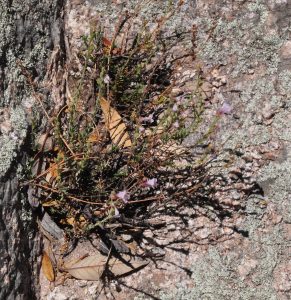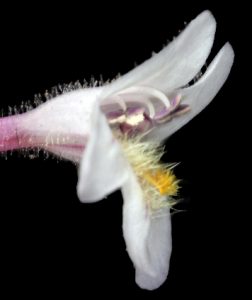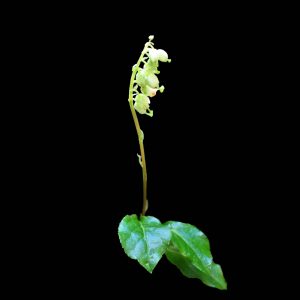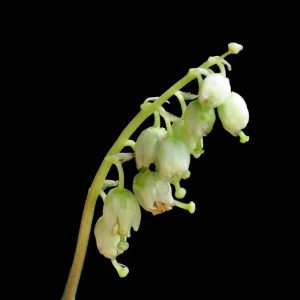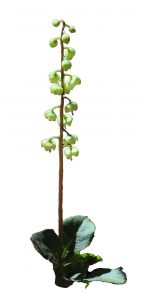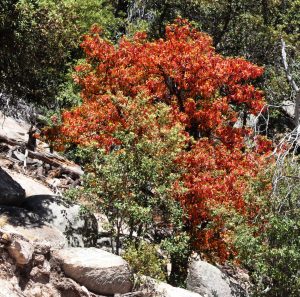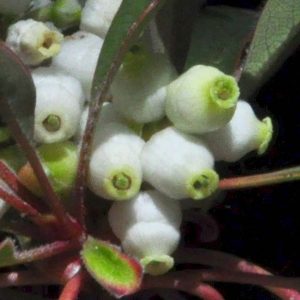Driving up the mountain road, you pass mile-post 15, and soon come to a point where the road turns away from the view you have been enjoying for several miles. You are now in an Oak-Pine woodland at almost 7000 feet. The ground is a tumble of boulders, some in quite fantastic shapes. And on these boulders, seemingly growing right out of the rock surface, are these delightful little plants. On a recent hike in the mountains we came to an area with dozens of them scattered over a fairly wide area, almost all of them growing in some kind of rock crevice. Many were in bloom, though the flowers were few and far between. The plant is called: Catalina Beardtongue (Penstemon discolor), and is only found in one state in the Union – Arizona. The color ranges from a very pale blue, almost white, to a much deeper hue. The flower stalks are only a few inches high. And they certainly have a very remarkable beard on their tongue.
There was a lot of road reconstruction during the rebuilding of the Hitchcock Highway up the Catalina Mountains north of Tucson from 1988 to 2005. The road goes right through this area, which is the only part of the range where I have seen this flower. We were worried as to whether it would survive. The fact is, the plant is doing extremely well, surviving on rock surfaces with practically no soil, and in a part of the year with very little rain. Through all of that, this gem of a flower keeps its beauty.


